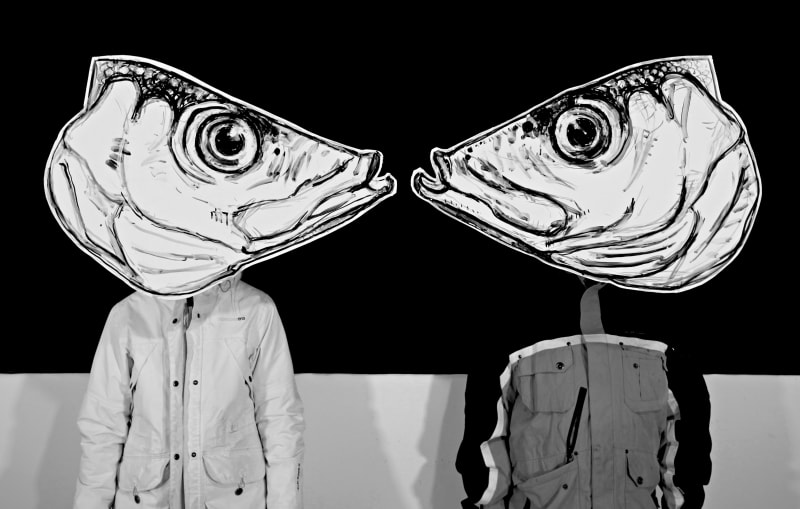In light of the recent developments regarding Coronavirus (Covid-19), the Royal Scottish Academy of Art & Architecture will close to the public from 5pm on Tuesday 17th March until Thursday 30th April at the earliest. Please continue to enjoy this exhibition online. Artworks are still available to purchase online and by enquiry.
With almost 800 islands, Scotland is defined by its existence as an archipelago. The elemental landscape of the islands, with their geographical and meteorological extremes, make them a compelling subject for artists. This exhibition looks at the specificities of landscape, language and oral tradition in the Hebrides, Orkney and Shetland, as well as the experience of living within island communities.
The exhibition sees Royal Scottish Academicians address the subject of the Scottish islands in a wide variety of media and approaches. Several artists look to the rich history of the islands: Frances Walker’s etching, Finlaggan, shows the historic seat of the Lord of the Isles on Islay while Marian Leven’s subtle watercolour studies give a ghostly monumentality to the evacuated islands of St Kilda.
Other artists look to the traditions embedded in the rural ways of life in the islands. Keith McIntyre, an artist based on the small island of Berneray in the Outer Hebrides, looks to the old ‘Oidhche Challain’ tradition of the island. Celebrating New Year on the 12th of January, according to the Julian Calendar, the islanders wear masks and hit each croft-house on the island with sticks to ward off evil spirits.
Having spent some time as a herring fisherman in his youth, Will Maclean’s three mixed-media works appear as an elegy to the fishing industry that once thrived in the Hebrides. In West Coast Loch Mat-full, Maclean uses a copper stencil that was used to mark the contents of the barrels of cured herring: ‘Matt’ or ‘Matties,’ borrowed from the Dutch Matjes, was a term used for young fish, and ‘full’ refers to fish caught with their roes intact. The lead-cast fish, pierced by a spike, becomes a memorial for an industry that once defined the culture and landscape of the West Coast. A similarly wistful tone is struck in Lennox Dunbar’s A Reminder and A Pasture Beyond, in which the island landscape becomes a site of archaeological discovery, layered with memories of the past.
Looking to the significance of oral tradition in the islands, Arthur Watson’s three letterpress prints consist of the four-letter island names of Mull, Iona and Uist, with instructions for singing taken from Songs of the Western Isles (1930) cited below. Presenting the islands in direct correlation to song makes for an emotive synthesis that puts music and language at the heart of island identity.
Elsewhere in the exhibition, artists look to the sheer beauty of the sublime landscape of the Scottish archipelago. Kate Downie depicts the verdant hills and turquoise waters of the Hebrides in deft, translucent watercolour and Barbara Rae evokes the contrasts of Orkney, portraying the wild shores of Yesnaby in the vivid palette for which the artist is so well-known. Despite the diversity of styles and methodologies on view, a shared respect and reverance for the islands is felt throughout the exhibition.
